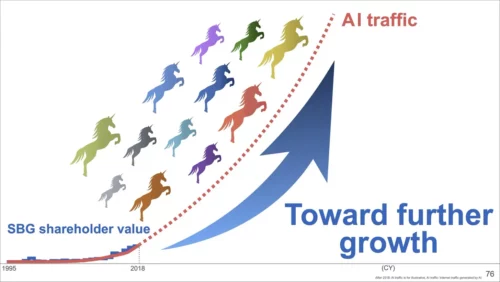不再彷徨:完全弄懂JavaScript中的this
其实this是一个老生常谈的问题了。关于this的文章非常多,其实我本以为自己早弄明白了它,不过昨天在做项目的过程 中,还是出现了一丝疑惑,想到大概之前在JavaScript weekly里收藏待看的一篇详解this的文章(后有链接,也附上了稀土上的中文译文)和另一篇一位前辈推荐的文章,就把它们看了看,对this的认识 确实提升了一些。
JavaScript 中的’this‘是动态的,它在函数运行时被确定而非在函数声明时被确定。所有的函数都可以调用’this’,这无关于该函数是否属于某个对象。关于this,主要有以下四种情况。
1.被当做对象的方法被调用
如果该函数是被当做某一个对象的方法,那么该函数的this指向该对象;
var john = {
firstName: "John"
}
function func() {
alert(this.firstName + ": hi!")
}
john.sayHi = func
john.sayHi() // this = john这里有一点值得注意,当一个对象的方法被取出来赋值给一个变量时,该方法变为函数触发,this指向window或underfind(严格模式)。
2.函数之内调用
当函数中有 this,其实就意味着它被当做方法调用,之间调用相当于把他当做window对象的方法,this指向window,值得注意的是ES5其实是规定这种情况this=undefined的,只浏览器大多还是按照老的方法执行(本人在最新版的Chrome,Safari,Firefox中测试都指向window(201607)),在火狐下使用严格模式指向undefined;
func()
function func() {
alert(this) // [object Window] or [object global] or kind of..
}为了传递this,()之前应该为引用类型,类似于obj.a 或者 obj['a'],不能是别的了。
这里还存在一个小坑,当对象的方法中还存在函数时,该函数其实是当做函数模式触发,所以其this默认为window(严格模式下为undefined)解决办法是给该函数绑定this。
var numbers = {
numberA: 5,
numberB: 10,
sum: function() {
console.log(this === numbers); // => true
function calculate() {
// this is window or undefined in strict mode
console.log(this === numbers); // => false
return this.numberA + this.numberB;
}
return calculate();
}
};
numbers.sum(); // => NaN or throws TypeError in strict mode var numbers = {
numberA: 5,
numberB: 10,
sum: function() {
console.log(this === numbers); // => true
function calculate() {
console.log(this === numbers); // => true
return this.numberA + this.numberB;
}
// use .call() method to modify the context
return calculate.call(this);
}
};
numbers.sum(); // => 15 3.在new中调用
一个引用对象的变量实际上保存了对该对象的引用,也就是说变量实际保存的是对真实数据的一个指针。
使用new关键字时this的改变其实有以下几步:
- 创建
this = {}. - new执行的过程中可能改变
this,然后添加属性和方法; - 返回被改变的
this.
function Animal(name) {
this.name = name
this.canWalk = true
}
var animal = new Animal("beastie")
alert(animal.name)需要注意的是如果构造函数返回一个对象,那么this指向返回的那个对象;
function Animal() {
this.name = 'Mousie';
this.age = '18';
return {
name: 'Godzilla'
} // <-- will be returned
}
var animal = new Animal()
console.log(animal.name) // Godzilla
console.log(animal.age)//undefined这里需要注意的是不要忘记使用new,否则不会创建一个新的函数。而是只是执行了函数,相当于函数调用,this其实指向window
function Vehicle(type, wheelsCount) {
this.type = type;
this.wheelsCount = wheelsCount;
return this;
}
// Function invocation
var car = Vehicle('Car', 4);
car.type; // => 'Car'
car.wheelsCount // => 4
car === window // => true 4.明确调用this,使用call和apply
这是最具JavaScript特色的地方。
如下代码:
func.call(obj, arg1, arg2,...)第一个参数将作为this的指代对象,之后的参数将被作为函数的参数,解决方法是使用bind。
function Animal(type, legs) {
this.type = type;
this.legs = legs;
this.logInfo = function() {
console.log(this === myCat); // => true
console.log('The ' + this.type + ' has ' + this.legs + ' legs');
};
}
var myCat = new Animal('Cat', 4);
// logs "The Cat has 4 legs"
setTimeout(myCat.logInfo.bind(myCat), 1000);
// setTimeout?? var john = {
firstName: "John",
surname: "Smith"
}
function func(a, b) {
alert( this[a] + ' ' + this[b] )
}
func.call(john, 'firstName', 'surname') // "John Smith"
至于apply,其只是以数组的方传入参数,其它部分是一样的,如下:
func.call(john, 'firstName', 'surname')
func.apply(john, ['firstName', 'surname'])它们也可用于在 ES5 中的类继承中,调用父级构造器。
function Runner(name) {
console.log(this instanceof Rabbit); // => true
this.name = name;
}
function Rabbit(name, countLegs) {
console.log(this instanceof Rabbit); // => true
// 间接调用,调用了父级构造器
Runner.call(this, name);
this.countLegs = countLegs;
}
var myRabbit = new Rabbit('White Rabbit', 4);
myRabbit; // { name: 'White Rabbit', countLegs: 4 }5..bind()
对比方法 .apply() 和 .call(),它俩都立即执行了函数,而 .bind() 函数返回了一个新方法,绑定了预先指定好的 this ,并可以延后调用。
.bind() 方法的作用是创建一个新的函数,执行时的上下文环境为 .bind() 传递的第一个参数,它允许创建预先设置好 this 的函数。
var numbers = {
array: [3, 5, 10],
getNumbers: function() {
return this.array;
}
};
// Create a bound function
var boundGetNumbers = numbers.getNumbers.bind(numbers);
boundGetNumbers(); // => [3, 5, 10]
// Extract method from object
var simpleGetNumbers = numbers.getNumbers;
simpleGetNumbers(); // => undefined or throws an error in strict mode 使用.bind()时应该注意,.bind() 创建了一个永恒的上下文链并不可修改。一个绑定函数即使使用 .call() 或者 .apply()传入其他不同的上下文环境,也不会更改它之前连接的上下文环境,重新绑定也不会起任何作用。
只有在构造器调用时,绑定函数可以改变上下文,然而这并不是特别推荐的做法。
6.箭头函数
箭头函数并不创建它自身执行的上下文,使得 this 取决于它在定义时的外部函数。
箭头函数一次绑定上下文后便不可更改,即使使用了上下文更改的方法:
var numbers = [1, 2];
(function() {
var get = () => {
console.log(this === numbers); // => true
return this;
};
console.log(this === numbers); // => true
get(); // => [1, 2]
// 箭头函数使用 .apply() 和 .call()
get.call([0]); // => [1, 2]
get.apply([0]); // => [1, 2]
// Bind
get.bind([0])(); // => [1, 2]
}).call(numbers);这是因为箭头函数拥有静态的上下文环境,不会因为不同的调用而改变。因此不要使用箭头函数定义方法
function Period (hours, minutes) {
this.hours = hours;
this.minutes = minutes;
}
Period.prototype.format = () => {
console.log(this === window); // => true
return this.hours + ' hours and ' + this.minutes + ' minutes';
};
var walkPeriod = new Period(2, 30);
walkPeriod.format(); // => 'undefined hours and undefined minutes' 参考
强烈推荐觉得没弄明白的同学看看上面三篇文章,其中第三篇是第二篇的译文。如果大家对this还有疑问,也欢迎大家一起讨论,交流促进思考,共同进步。
本文文字及图片出自 segmentfault.com
你也许感兴趣的:
- JavaScript 框架选择困难症仍在增加
- 【程序员搞笑图片】盒子里有什么?javascript
- Node.js之父ry“摇人”——要求Oracle放弃JavaScript商标
- JavaScript 之父联手近万名开发者集体讨伐 Oracle:给 JavaScript 一条活路吧!
- 立即让JavaScript获得自由!JS之父等超8000人喊话Oracle:你们也不用,放手吧!
- ECMAScript 2024新特性
- 【外评】JavaScript 变得很好
- 一长串(高级)JavaScript 问题及其解释
- 不存在的浏览器安全漏洞:PDF 中的 JavaScript
- Python 里的所有双下划线(dunder)方法、函数和属性

















你对本文的反应是: